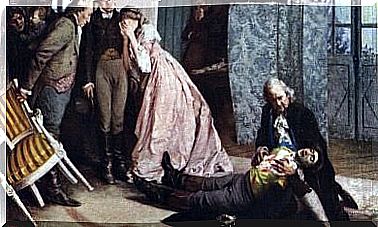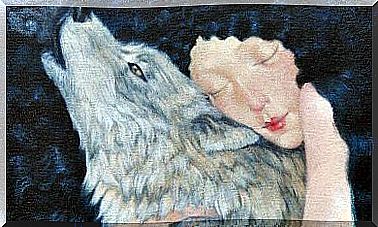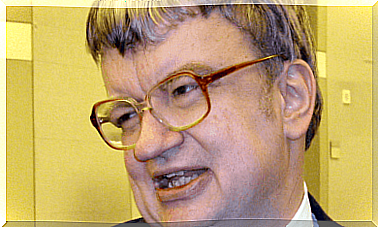Cattell’s 16 Personality Models

Cattell’s model is undoubtedly one of the most famous personality models, and his efforts to describe personality reached people with the famous test, the 16 PF test. Although the original version of Cattell is no longer in use, its spirit is still alive.
Cattell stands out because he presented two different types of intelligence: liquid intelligence and crystallized intelligence. Liquid intelligence is closer to the current concept of intelligence. An individual would use such intelligence, for example, to solve logical problems. An individual’s personal experiences are less important. What matters more is the individual’s expertise in the challenge itself. Crystallized intelligence, on the other hand, brings together a person’s experience. Therefore, it is useful for answering questions and memory problems.
The subject of intelligence is really interesting, as is the development of Cattell’s intelligence. In this article, we are going to focus on his interesting personality model and the questionnaire he used to apply it, i.e. 16 PF.

Cattell and 16 PF
Personality research is a controversial topic in psychology. In this sense, such a self-conditioned condition conditioned by environment and genetics has paved the way for numerous theories that have fought for hegemony.
In addition to the debate about the origin of personality (genetic environment), there has also been an open debate about how much an individual’s personality can change or influence behavior. One interesting debate about personality relates to its division, segmentation, and dynamics.
In this sense, we could consider Cattelli as a synthesizer of the work of British and American writers in this profound field of mental and personality skills. He used a methodology that was really powerful at the time in the scientific study of intelligence, as well as in the study of personality. His goal was to isolate different primary factors.
In his research, he used three sources as a data collection technique.
- Q (questionnaires)
- L (reviews and interviews)
- T (objective tests)
The three stages of the Cattell model
Methodologically, his work was known for being a serious and rigorous effort to analyze and create a solid, stable, and also reliable model from the three sources we listed. The evolution of his model can be understood if it is described in three stages:
- Step One: This is 171 personality traits. Cattell pulled all of these traits from a longer list made by Allport and Odbert a few years earlier.
- Step Two: This focuses on information obtained from reviews or interviews in order to provide theoretical content to these factors.
- Third step: He used the information gathered from the questionnaires (Q) and the objective tests (T). After all the content and mathematical analysis, he came to the conclusion that there are 16 personality factors. These are the dimensions in which we can all be categorized in one way or another. Mathematically, they are all logical products of first-order factor analysis. This can be presented in two ways:
- Heat (high-low)
- Reasoning (high-low)
- Emotional stability (self strength – self weakness)
- Prevalence (prevalence decrease)
- Vibrancy (affectivity-deaffivity)
- Rule Awareness (High Excess Strength – Low Excess Strength)
- Social Courage (Threctia / Shyness – Parmia / Courage)
- Sensitivity (Premiums / Sensitivity – Harria / Toughness)
- Vigilance (Alaxia / Trust – Protension / Distrust)
- Abstraction (Praxernia / Pragmatism – Autism / Imagination)
- Privacy (simplicity / skill)
- Restlessness (guilt-restlessness)
- Openness to change (radicalism-conservatism)
- Self-sufficiency (self-sufficiency / group attachment)
- Perfectionism (High self-image management – low integration)
- Tension (Low erginen tension – high tension erginen)
Second-order factors in the 16 PF test
The personality factors we have listed above are not independent (orthogonal). Instead, they represent positive and negative correlations, giving rise to other basic factors (second-order factors):
- QS1. Closed vs. extroverted
- QS2. Anxiety vs. calmness
- QS3. Sensitivity vs. stubbornness
- QS4. Dependence vs. independence
Next, based on these first- and second-order factors, Cattell created one of the most well-known and most widely used surveys ever. In addition, Cattell classifies these personality traits based on two aspects:
- Origin: hereditary vs. environmental
- Content: temperamental, motivating and interests
Thus, this author and researcher defended the idea of what is still accepted by most personality experts. This idea also states that the composition of an individual’s personality is the result of his or her genetics and the environment in which he or she has evolved.
Four scales: managing anomalies
Finally, in order to manage possible anomalies in responses, 16 PF uses four scales: response style (reliability and validity), image manipulation (social desirability management), consent (tendency management gives the same answer regardless of the question), and frequency index or opportunity index (query detection). , answered at random and annulled: based on the coherence of the questions of each author).

Cattell’s merits
Cattell’s merits can be divided into two main branches that are connected in a truly intimate way. On the other hand, he intends to define precisely or give a mathematical form to this model. In this case, this is about personality. This is undoubtedly a difficult task, as we are now talking about something that can be measured indirectly.
There is almost always something in these definitions. “Polluting” variable. In most surveys or psychometric tests (acceptable competence and reliability, such as 16 PF), it is the individual who makes the decision to answer the question asked. So let’s keep in mind that self-knowledge often has little to do with reality.
To explain this, we give an example which, in addition to being ironic, is as clear as it is human. It’s about the idea of walking down the street and listening to it when two women call each other stubborn, repeatedly and incessantly, and neither notices this trait in themselves. Paradoxically, isn’t it? This paradox also appears when we respond to many personality tests.
Cattell’s next great merit has directly to do with the articulation of this model. History, albeit sometimes erroneously, seems to be a good filter of humanity to omit any useless events or crazy thoughts that lead to a dead end. However, this has not happened with Cattell’s model, and that is why we have wanted to dedicate this article to him.









